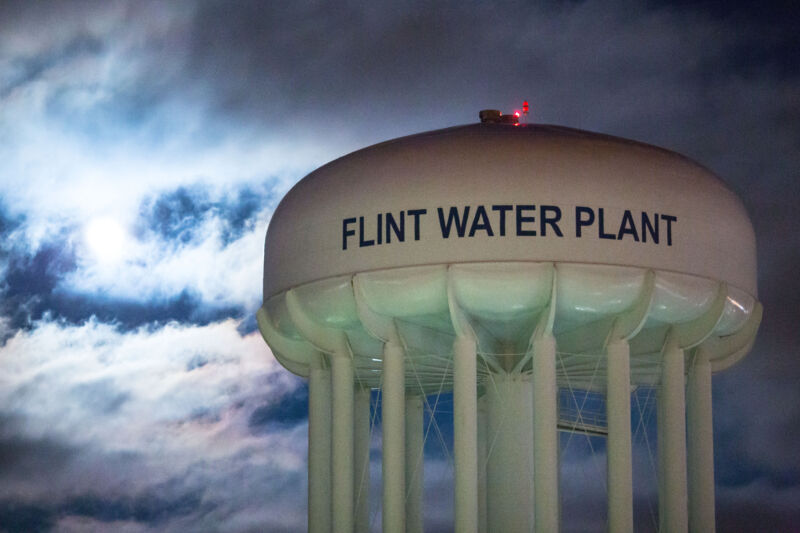Flint water crisis costs Michigan $600 million—preventing it would have cost $80/day

Enlarge / The city of Flint Water Plant water tower in Flint, Michigan. (credit: Brett Carlsen/Getty Images)
Residents of Flint, Michigan, began complaining in 2014 that their water tasted bad, smelled foul, and came out of the tap discolored. The city had switched water supplies to save money, and in the process, the city and state failed to add anti-corrosion chemicals to the new supply. Flint's aging pipes began to poison its residents. People suffered rashes after bathing, children were exposed to high levels of lead, and at least a dozen people died from Legionnaires' disease.
Residents, pediatricians, and pastors sounded the alarm, but it wasn't until they sued the city and state that a federal judge ordered bottled water to be delivered to every affected home.
In the intervening years, though, up to 20,000 children were exposed to potentially dangerous levels of lead. In some neighborhoods, the percentage of children who suffered from lead poisoning tripled.
Read 7 remaining paragraphs | Comments